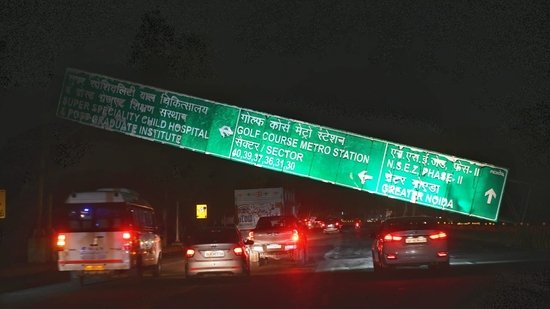Table of Contents
Delhi Rain Havoc: 2 Dead, 11 Injured, Flights Hit, Roads Flooded
A fierce storm battered Delhi on Wednesday, leaving a trail of destruction, widespread flooding, and severe disruptions across the capital. The sudden downpour and high-velocity winds caused chaos across the city, leading to at least two deaths, injuries to 11 people, and significant damage to public and private property.
The powerful storm, which struck around noon, caught many residents and commuters off guard. Within minutes, the skies darkened and torrential rain accompanied by gusty winds brought Delhi to a standstill. Trees were uprooted, vehicles damaged, flights delayed, and major roads waterlogged, adding to the daily woes of Delhiites.

Tragic Loss of Lives
Delhi Police confirmed that two people lost their lives in storm-related incidents. One man died after a tree collapsed on him in the Civil Lines area. In another tragic case, a construction worker lost his life when a temporary structure collapsed at a site in South Delhi. These sudden incidents have raised questions about infrastructure safety and the city’s readiness for extreme weather events.
Eleven others sustained injuries in various parts of the city due to falling branches, flying debris, and minor building collapses. Authorities said the injured have been admitted to nearby hospitals and are currently under treatment. Most of them are said to be out of danger.
Airport Operations in Disarray
Indira Gandhi International Airport experienced major delays due to the storm. Several flights were diverted, delayed, or canceled as the weather made flying conditions unsafe. Passengers were seen waiting inside terminals for hours, with many expressing frustration over the lack of timely updates.
According to airport officials, over 20 incoming flights had to be diverted to nearby cities, including Jaipur and Lucknow. Departure schedules were also affected, creating a ripple effect across the network. Airlines later issued advisories asking travelers to check flight status before heading to the airport.
Trees Uprooted, Traffic Snarled
One of the most visible impacts of the storm was the widespread uprooting of trees. Several large trees fell across major roads such as Ring Road, Aurobindo Marg, and stretches of Lutyens’ Delhi. These blockages brought traffic to a halt for hours, especially during the evening peak.
Delhi Traffic Police reported more than 250 calls related to fallen trees, electric poles, and blocked roads. Emergency services, including the Fire Department and Public Works Department (PWD), were pressed into action to clear debris and restore movement.
In areas like Connaught Place, Karol Bagh, and South Extension, power outages added to public inconvenience. Many local markets had to shut early as water entered shops and basements. Residents reported knee-deep water in some colonies and slow response from municipal services.

Waterlogging Adds to Misery
Waterlogging was reported from nearly every district in Delhi, including vulnerable low-lying areas such as Minto Bridge, ITO, and Lajpat Nagar. Commuters found themselves stranded on flooded roads as vehicles broke down mid-journey.
Despite repeated assurances from civic bodies about pre-monsoon preparedness, the storm exposed glaring gaps in Delhi’s drainage infrastructure. Videos circulated online showed pedestrians wading through dirty water, while cars were seen half-submerged in several locations.
An auto-rickshaw driver near India Gate said, “Every year it’s the same story. A little rain, and everything collapses. We suffer, and nothing changes.”
Schools Shut, Metro Hit Briefly
Following the intensity of the storm, several schools suspended afternoon classes and advised parents to pick up children early. Some schools have announced closure for the following day due to unsafe commuting conditions.
The Delhi Metro also faced brief disruptions, especially on the Yellow and Blue lines, as overhead structures and debris were cleared. Officials stated that normal services resumed within an hour, but warned of potential delays if weather conditions worsened.

Government’s Response
Chief Minister Arvind Kejriwal expressed sorrow over the lives lost and injuries reported. In a tweet, he said, “The sudden storm was tragic and shocking. We are monitoring the situation closely. Our teams are working on clearing roads and assisting those affected.”
The Delhi Disaster Management Authority (DDMA) has initiated an assessment of the damage caused by the storm. Relief efforts are being coordinated across agencies, and compensation for victims’ families is expected to be announced soon.
Meanwhile, the India Meteorological Department (IMD) has forecast more rain and thundershowers for the next two days. Citizens have been advised to stay indoors during bad weather and avoid parking vehicles under trees or weak structures.
Experts Warn of More Frequent Storms
Environmental experts say this kind of sudden and intense weather is becoming more common due to climate change. “Urban areas like Delhi are especially vulnerable because of poor planning, high density, and limited green cover. This is a warning sign, and we must act quickly,” said Dr. Sunita Narain, a climate policy expert.
The recent storm has reignited debates around urban planning and infrastructure management in one of India’s most populated cities. With the monsoon season approaching, citizens are hoping that lessons will be learned and proactive steps taken.
Conclusion
The storm in Delhi has once again highlighted the city’s fragility in the face of extreme weather. From lives lost to chaos at the airport and on roads, the impact was felt widely and deeply. As clean-up operations continue, residents remain anxious about what the next rainfall might bring.
For now, all eyes are on civic agencies and weather forecasts. The hope is for quick recovery, preventive planning, and a safer Delhi for all.
Also read PM Modi Makes Triumphant Visit to Bikaner Post Operation Sindoor












Leave a comment